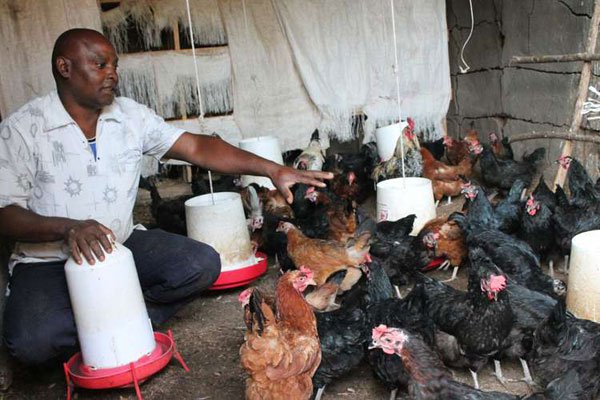Best Chicken Breeds in Kenya: I rear Kari Improved Kienyeji chickens. When I started, I wasn’t so sure on what breed I wanted to rear. Finally, I visited Kenya Agricultural and Livestock Research Organisation (Kalro) offices in Naivasha on November 29, 2013 to book 100 day-old chicks.
To know which breed to rear, I did extensive research on the various breeds, talked to farmers and attended seminars. I then settled on the Kari Kienyeji chickens, and after making a down payment of 10 per cent, I was asked to wait for three months for my delivery.
The good news is that unlike in the past when farmers who wished to rear poultry for profit only thought about hybrid breeds, we now have indigenous breeds to consider.
But what exactly qualifies a chicken to be labelled Kienyeji?
Can a bird raised under confined conditions, as opposed to free-range, and fed commercial feeds like layers mash still be considered Kienyeji?
For a fact, traditional indigenous chicken breeds identified in Kenya are heterogenous, with no standardised characteristics and performance and include varieties such as frizzled feathered, naked neck, barred feathered, feathered shanks, bearded, and dwarfed, among others.
From my research, I learnt that although exotic breeds are highly productive in terms of eggs and meat, they can be fragile, thus, too costly to manage.
For example, an exotic breed such as Leghorn lays about 300 eggs in a year, while improved indigenous breed from Kari produces between 220 and 250 eggs under good management. Kuroiler chicken lays between 150 and 200 eggs a year. By comparison, indigenous chicken raised traditionally under free-range conditions produce about 40 to 100 eggs every year.
At a seminar I attended in April 2013 conducted by an expert from Kari, participants were cautioned that although indigenous chickens are hardy, they are not miracle birds.
“Indigenous chickens consume less feeds than exotic breeds, are more resistant to diseases and have a ready market. However, they are not miracle breeds and need to be well taken care of and vaccinated for maximum production,” said an expert identified as Dr Nancy, who was answering questions from farmers.
Someone asked the difference between Kari Improved Kienyeji and Kuroiler and if these are pure indigenous breeds. Dr Nancy explained that Kari Improved Kienyeji is a pure indigenous breed developed by researchers from Egerton University and Kalro.
She said that the bird is not a crossbreed of exotic and indigenous birds.
“Parents were selected from indigenous birds with good characteristics to ensure the offspring performs better than previous generations.”
She cautioned against crossing improved birds with exotic ones at home since the offspring would have unpredictable performance.
She noted that the Kuroiler, which originates from Kegg farms in India and was introduced in Uganda in 2010, has indigenous traits. Kuroiler hens mature between two and four months and weigh up to 3kg. At three months, they start laying eggs continuously for two years. A mature Kuroiler cock can weigh as much as 4 to 5kg. Kari Improved Kienyeji cocks weigh 2kg at four-and-a-half months when the hens also start laying eggs.
I opted for Kari Improved Kienyeji because it can do well under free-range although I must admit all my 33 cocks aged five months died after transferring them from confined environment to free-range. I suspected fowl typhoid and coccidiosis due to poor hygiene conditions.
I must caution you against the notion that rearing indigenous chickens requires low start-up capital and they have little maintenance costs.
For a fact, I spent Sh102,468 to raise the 100 improved Kienyeji chickens in the first six months from October 17, 2014 to March 4, 2015. On average, feeds (commercial) accounted for 43 per cent of the total money I spent. Transport, running costs and labour accounted for 11, 10 and 10 per cent respectively.
The cost of buying 100 chicks, utilities and labour accounted for the remainder 9, 8 and 6 per cent.
In short, it may take sometime to recoup returns on investment. I started to make some money in the second year.
Choosing a breed to rear ultimately depends on your production needs, management (free-range or intensive), resources and target market. Consider an indigenous breed if you plan to free-range. Also go for indigenous breed if your target market prefers lean meat and yellow yolk eggs. However, unlike exotic broilers that mature in eight weeks, for indigenous breeds, be prepared to wait between 4.5 to six months to sell the meat.
Best Chicken Breeds in Kenya: This feature by Subiri Obwogo was first published by the Seeds of Gold farming journal. Seeds of Gold is a publication of the Nation Media Group.








